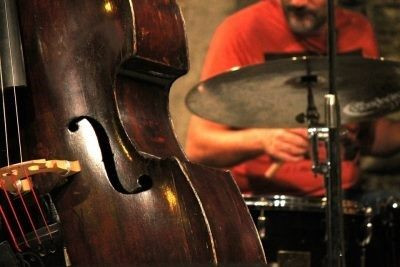Random Gig Tips from Bob
Going Back in Time - here's a Guest Blog Post from Bob, a "reprint" from a few years ago!
Every once in a while, I like to share little random tips I've come up with over the years. Some help you keep track of your stuff, others can save your bacon on a gig. For your enjoyment, and hopefully edification, here is the latest collection (some of these are from Mark as well.)
- I love the little Avery 05422 (1/2" x 1 3/4") removable self-adhesive labels (or Staples generic equivalent). I jot dates for batteries (9v 4/2/13) and string change dates and stick them on preamps and other electronic devices, the backs of e-bass headstocks, reference settings on amps, preamps, and pedals, etc. They peel off easily and don't leave marks or residue. I've been using them for years, pick up a pack, they rock. (Non-musical bonus tip: stick one to your credit card and jot down the current rebate categories so you use the right card for that extra cash-back.)
- Similar to the above, whenever I get a new piece of gear that has a "wall wart" power supply, I immediately get out my silver paint marker (it's like a "SharpieTM" but with silver paint ink) and write the name of the unit directly on the power supply. I must have dozens of these AC/DC adapters floating around in various gig bags and closets, and if I didn't mark them, I'd go crazy trying to match the adapters up to the gear when needed.
- It can always be a good idea to recheck the contents of your gig bag, especially if it's been a while since your last performance. It sucks to discover that your forgot to put something back that you borrowed for another use. For a list of gig bag contents and philosophy, see our FAQ on What to Bring to a Gig.
- My "preflight gig check," after unpacking my bass when arriving at the venue, is:
- look at the bridge to be sure it is centered and a perfect 90 degrees, since it can get jostled and shift in transit
- check the pickup, wire, and jack (depending on the bass and pickup I'm using) for proper positioning and stability
- be sure the endpin is out at the right height and tight (I'm short so it's not always retracted during travel
- listen for physical buzzes or vibrations that might be annoying and/or amplified
- I never assume that the sound engineer at a gig will actually have all the gear that every sound engineer should have at a gig. I always like to carry a basic piezo-friendly DI box (or use an amp with a good DI) and my own XLR cable, in case the engineer forgets to bring enough of his own. Nice to have backup plan B in the bag.
- Stage volume is key. So many times I've seen bands with (at least) one player whose onstage volume is too loud. Either the drummer is hitting too hard, or the guitarist or bassist has their amp up to unnecessary levels. The problem is that there's so much volume coming from the stage, that the FOH (Front-Of-House) engineer can only try to even up the level of the other instruments to compensate. At this point, the sound man has lost control. If you have a bad mix now (and you most certainly will) it is your fault.
Hope you find those little random tips useful!
Mar 31st 2021
Recent Posts
-
Pirastro's Perpetual Bass Strings - Do I want Stark, Medium, or some combination?
I just spent the time writing this up to post in a thread at Talkbass, so I figured I'd also share i …Nov 12th 2025 -
Preserving our Humanity
Our site has a very distinctive style and flow. And that comes from our longtime dedication to being …Sep 3rd 2025 -
What can Brown do for you? Nothing good, at least lately.
I really don't think I've ever publicly called out any other companies, so this is a first. But I've …Aug 13th 2025




